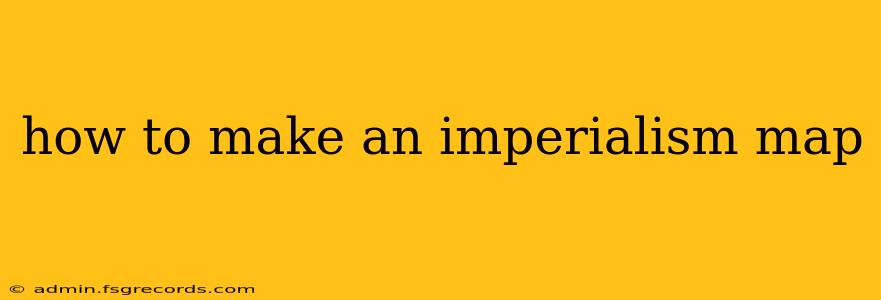Creating an imperialism map is a rewarding project that can visually represent the complex historical process of empire-building. Whether you're a student, teacher, or history enthusiast, this guide will walk you through the process, from initial planning to the final touches. This isn't just about slapping some colors onto a world map; it's about crafting a clear, informative, and visually engaging representation of a fascinating and often controversial period.
I. Planning Your Imperialism Map: Setting the Stage
Before you even touch a map, careful planning is crucial. This will save you time and frustration in the long run.
1. Defining Scope and Time Period:
- Which empires? Will you focus on European imperialism, or include others like the Mongol Empire or the Ottoman Empire? A global map of all empires across all history is likely too broad.
- What time period? The "Age of Imperialism" is often associated with the 19th and early 20th centuries, but you might choose a narrower focus (e.g., British imperialism in India, 1757-1947) or a broader one (e.g., European colonization from 1500-1960). Specificity is key.
- Geographical focus? Will you focus on a specific continent (Africa, Asia, etc.) or a region within a continent? The level of detail will influence your map's scale.
2. Choosing Your Mapping Tools:
- Digital Mapping Software: Programs like ArcGIS, QGIS (open-source), or even Google My Maps offer powerful tools for creating detailed and interactive maps. These are excellent for precise control and annotation.
- Traditional Methods: If you prefer a more hands-on approach, you can use a world map (physical or printed) and colored pencils, markers, or paints. This method is more limited in terms of precision but allows for a creative, artistic touch.
3. Data Gathering:
This is the most crucial step. You'll need accurate historical data on:
- Territorial control: Identify the precise boundaries of colonial possessions for your chosen time period. This might involve consulting historical atlases, academic papers, and online resources like the Library of Congress.
- Types of control: Was it direct rule, indirect rule, protectorate, sphere of influence? Different colors or patterns can represent these variations in imperial control.
- Key dates: Consider adding key dates of significant events related to imperialism within the specific territories.
II. Creating Your Imperialism Map: Bringing it to Life
With your planning complete, it's time to start creating the map itself.
1. Base Map Selection:
Choose a world map appropriate for your scope. If you're using digital software, select a base map with appropriate detail and projection (Mercator projection is common but has distortions, consider alternatives). For hand-drawn maps, ensure your base map is large enough for detail.
2. Color-Coding and Legends:
Develop a clear and consistent legend. Different colors should represent different empires, and patterns or shades can be used to show different levels of control (e.g., darker shades for direct rule, lighter shades for spheres of influence). Ensure your legend is easily understandable.
3. Adding Details:
- Borders: Carefully outline the borders of each empire's territories for your chosen period.
- Labels: Label major colonies, important cities, and key geographical features.
- Annotations: Include concise annotations to highlight significant events, treaties, or conflicts.
- Key: A comprehensive key explaining colors, patterns, and symbols is essential.
4. Refining and Presentation:
Once your map is complete, review it for accuracy and clarity. Ensure the legend is comprehensive and easily understood. Consider adding a title that clearly communicates the map's scope and time period. For digital maps, you can export the map in high resolution for printing or online sharing.
III. Beyond the Basics: Enhancing Your Imperialism Map
To create a truly impactful map, consider these advanced techniques:
- Interactive Elements: For digital maps, incorporate interactive elements like clickable regions that provide more information upon selection.
- Cartographic Conventions: Use standard cartographic conventions (e.g., line thickness, font sizes) to enhance readability and visual appeal.
- Data Visualization: Instead of just showing borders, you might visualize data like population density, resource extraction, or migration patterns within colonial territories.
Creating a compelling imperialism map requires careful planning, accurate data, and a strong visual approach. By following these steps, you can craft a visually engaging and historically informative map that will effectively communicate the complexities of imperial expansion. Remember, accuracy and clarity are paramount – your map should be a reliable and insightful representation of a pivotal period in history.

